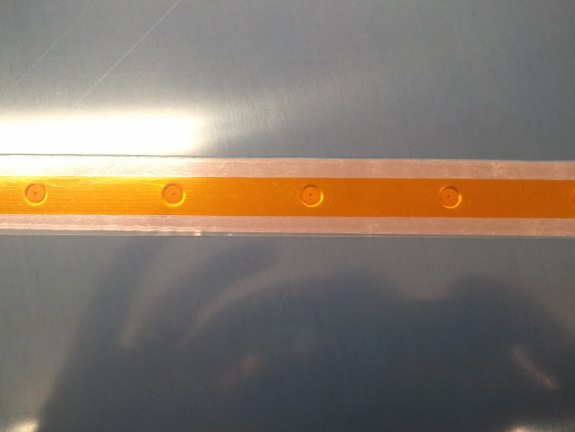Backriveting…Step by Step
It’s Saturday and my Honey-Do’s are done…so off to the shop for another good and healthy build session. For some reason, I felt inspired to do a back rivet tutorial. Maybe it will be useful to someone else down the road. So here goes. There are some key tools that are needed to do back riveting correctly.
- Rivet Gun
- Back Rivet Set
- Back Rivet Plate
- Rivet Tape
As you can see here, I have my tools for back riveting in place. My back rivet set has a brass collar. I have seen others with a Delrin collar. Before I got started, I polished my collar to a smooth finish both on the sides and the face to reduce the chance of it marring my parts. I made sure to remove the sharp edge of the collar on the inside and outside radius. Turns out that was a good thing. I also lubed the collar and spring up with some dry lube called White Lightning typically used in Cycle lube. It is good stuff and won’t get all over stuff when the tool is in use.
My back rivet plate (not shown) is a 12″ x 4″ x 1/4″ piece of cold rolled steel bar stock a machinist friend gave me. I simply took some Harbor Freight Aviation Department metal finishing abrasive wheels and got one face finished to a mirror. It is hard and heavy and works well.
The Rivet Tape is Avery Tools version. The outside edges of the tape are adhesive, while the center portion that goes over the rivet head is not. I like it.
Step 1, lay your row of rivets into the dimples on the outside part.
Step 2, place your rivet tape over the heads to hold them in place and to protect the heads from the back rivet plate. Here you can see my back rivet plate on my bench.
Step 3, flip the part over and set over the back rivet plate. Ready the part to be joined.
Step 4, Stack all the parts over the back rivet plate. You can see that I used the carpet on my bench to keep the skin the same level as the back rivet plate. Here you can also see the skin, rivet tails, stiffener all lined up and ready to smack.
Step 5, Smack the heads with your back rivet set. The key here is to make sure the rivet you are setting is on the back rivet plate…otherwise you will make a mess. You can see here that my back rivet set left some marks in the primer. I am sure that they would be far worse if I had not polished the collar. As it stands, they are superficial and a light dusting of primer will cover them nicely.
This concludes your photo Back Rivet tutorial, now back to regular programming.
















